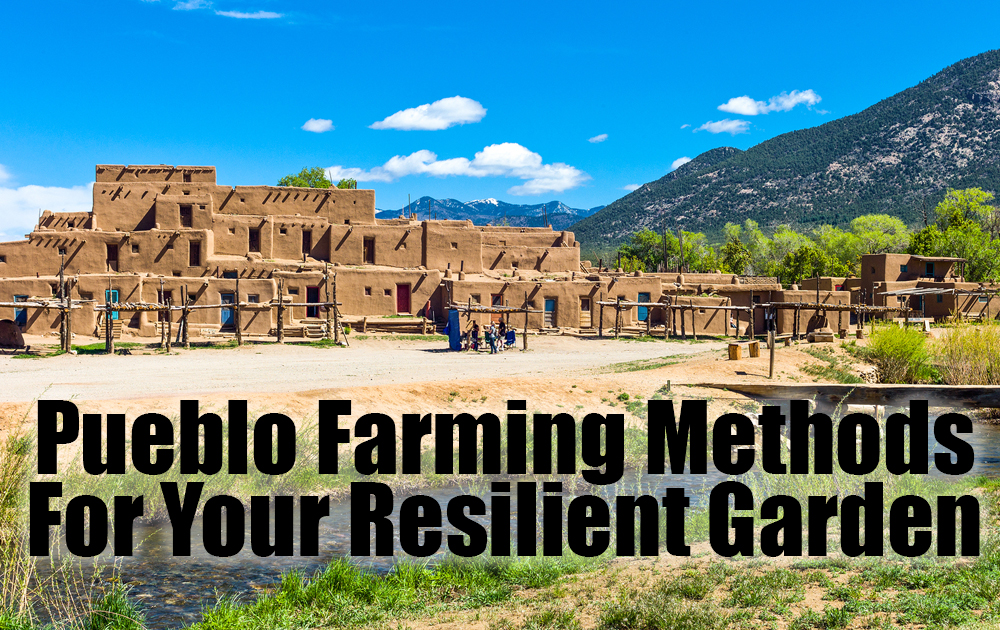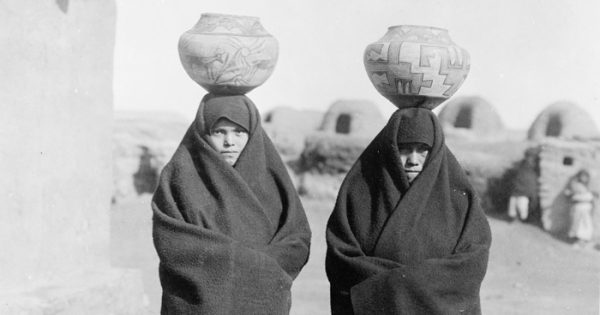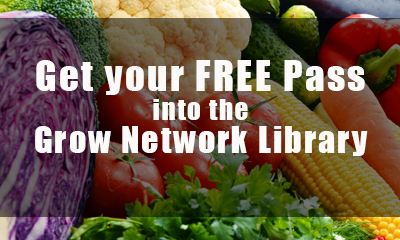I spent the morning in Albuquerque, New Mexico at the Indian Pueblo Cultural Center’s Resilience Garden learning about the history of Pueblo Farming Methods. There are 19 Pueblos of New Mexico represented at the center.
The Resilience Garden tells the story of pre-contact foods and traditional farming methods all the way to modern plants and gardening methods for urban communities.
Watch the Interview (15:49 minutes):
Irrigation
The Zuni Pueblo is highly represented in the Resilience Garden because of its unique irrigation method, called a waffle garden. It is a brilliant technique to harvest and conserve water and is several thousand years old.
Zuni Pueblo Waffle Garden
Without a permanent water source, you can’t water a large area of crops. The waffle garden acts like a puddle. You hand-carry water to the beds and make sure the water stays concentrated where you put it.
The walls of the waffle bed are hand formed to catch any rainfall and focus that precious water around seeds and the roots of plants. It keeps the soil damp during the weeks of the dry season.
Water is a vital, life-giving element, especially in this desert climate. Pueblo cultures honor water through sustainable practices, as well as seasonal dances praying for generous rains, healthy plants, and a bountiful harvest.
Acoma and Laguna Flood Garden
Seasonal rains were crucial in Pueblo agriculture. Many of the Pueblos are located near plateaus. When the seasonal rains come, the rain runs off of the plateaus and into the flood gardens.
A wall around the flood garden holds the water in a particular area to water their crops. There were often multiple flooding areas, so if one area filled up with water, a wall would be removed so the water flowed into the next area and so on.
Pueblo crops planted in these types of gardens
The waffle and flood gardens were planted with melons and squash. The heavy amount of water would undermine a corn plant’s root system causing it to fall over.
Plants
The Pueblos are scattered throughout the state of New Mexico with a wide-variety of climates, from mountains to desert and plateaus to scrub. However, the Pueblo People concentrate their gardening around the Three Sisters (Corn, Beans, and Squash).
Community food production
Most of the crops grow in communal plots. Land was not owned, making it easy to move your garden each year. You weren’t planting in the same place (preventing pest and disease issues, and giving the land time to rest). By the time you got back to your original growing space, nature had time to rebuild healthy soil.
Want to know more about community food production? Click here to watch I Don’t Want to Grow All My Own Food.
Prior to European Contact
Prior to contact with Europeans, there were many berries and different types of shrubs that were wild harvested.
Other pre-contact plants:
- Mint
- Cotton
- Strawberries
- Raspberries
- Wild Spinach
- Yucca
- Wild Celery
- Tea (a tall grass)
- Chokecherries
- Wild plums
- Wild mushrooms
Traditional herbs and many plants were not cultivated but harvested where they grew naturally.
Learning through history
Lessons were learned throughout history in places like Mesa Verde and Bandolier. These sites were built into cliffs with little or no space for agriculture to support such a larger community.
Corn is one of the oldest plants, which came from Mexico. The Pueblos have had corn for many thousands of years.
It is unknown when or how Beans and Squash came into Pueblo agriculture. There isn’t an exact story of where these plants came from.
The stories that have been handed down through the history of Pueblo culture speak to why they garden as they do and the way plants are cultivated or not.
When the Spanish came to New Mexico, the pueblos were thriving. They had seven years-worth of food stored. The stored food kept the Spanish from conquering the Pueblos. It was the generosity of the Pueblo people that helped the Spanish survive in this harsh environment.
The Spanish, in turn, brought sheep, horses, chickens, and even the fruit trees that are grown today.
There are still families at the Pueblos who grow in the traditional methods and incorporate modern plants. Even the younger generations are becoming interested in the agricultural traditions once again.
Pueblo Ceremonies
Pueblos have many ceremonies throughout the year. The dances and songs vary from Pueblo to Pueblo. The reason many dances are not open to the public is because they are sacred. The dance and song are prayers to the soil, the plants, the pollinators, and gratitude for the harvest.
The season starts in the spring with ceremonies for preparing the soil and starting seeds. The ceremonies also bless the land with songs and dances.
Then throughout the summer, there are many dances that bless the field and crops, bring in the pollinators like the butterflies, and for a good harvest.
All of the dances, songs, preparations, plantings, and seasons lend themselves to the story of living life close to nature and gardening in a sustainable way.
Your Resilient Garden
At the Resilience Garden, they’re inspiring modern gardeners. Their methods are thousands of years of trial and error.
If you got out in your garden for the first time today, you would still come up with these methods on your own. Learning some of the best methods right away and adapting them to where you live will only help you create an abundant harvest.
The Resilience garden shows what gardeners have learned over the years:
- Preparing the soil is the foundation to sustainable gardening
- Planting the right plant in the right place
- Harvesting with gratitude
- Sharing knowledge with others
Resilience is a common theme for the Pueblos throughout history. They have survived contact with many nations and still remain humble, loving, and incredibly generous. The Pueblo agricultural methods and seeds are still alive after thousands of years. That’s pretty amazing!
The name of the garden is powerful and inspiring for the Indigenous people of the area, and anyone who comes to this space. There is even a Seed Bank, where the Pueblo people drop off seeds that have been in their family for many generations. That’s better than money!
If you’re in Albuquerque, please stop by and learn more about Pueblo Culture and the Resilience Garden. Click here for more information.
Resources:
Historic Images: Library of Congress
Dance footage courtesy of the Indian Pueblo Cultural Center
 Click here to get your FREE pass
Click here to get your FREE pass










COMMENTS(3)
The presentation made me have a greater appreciation for the way the Pueblo Indian survive.
What an incredible ways to teach/learn different avenues to gardening.
Thank you for such a wonderful informative article.